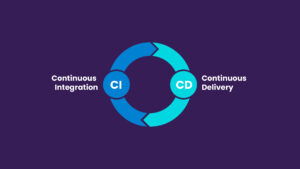I Have a Great New Software Idea! Now What?
May 20, 2016
What if you have an idea for a new software product? What do you do next? Here is how we can help you test and create an amazing application.
This blog post will focus on the first stage where you analyze the idea, the customers, the marketplace (including pricing), competitive landscape and timing. In future posts I will write about testing the idea, soft implementation (minimum viable product), launch, and pivoting. We are very familiar with all of these stages.
Initial Idea Stage:
The initial stage is where you have an idea. It’s super exciting. You think it will take over the world. This phase is so much fun.
Then you start to dig in deeper. Hopefully you start to think about prospective customers and partners. You analyze the size of the market. Then you find a competitor doing something similar, kind of.
Wait, maybe the idea isn’t perfect.
All of sudden your brilliant idea is only pretty good. This is a very normal part of the process. Part of the main issue with this stage is that many ideas, even the good ones, fall down because people expect to have no competition and have an enormous market. That rarely happens at the beginning.
Often the best ideas are a little ahead of their time. And it’s difficult to identify your exact customers, price point, sales channels and adoption rate. If all of this is easy to identify, your idea might be too late unless you have a new business model or distribution strategy to take-on the competition.
What now?
Timing is crucial yet almost impossible to understand. I’ve started companies that were before its time. I’ve also started companies that were too late to the party. It helps if you’re in the middle of the industry and understand the buyers, sellers, distribution and pricing, and the pace of new tech advancements. This can help a lot.Although, sometimes the best ideas come from the outside.
Generally the best way to start is by asking potential customers about your idea. For business to business ideas, this means reaching out to customers directly asking for their thoughts. For business to consumer, this means asking friends, your network, running a kickstarter, and testing ads on facebook to see if consumers are interested in your idea.
Often leading innovators, like Steve Jobs, say that your customers don’t know what they want. That’s true. But talking to your potential customers early-on, in true Lean Startup fashion, will at least uncover issues with your idea.
These issues could be around distribution, or how the product will integrate your customers’ current systems. I don’t think you should incorporate every single thing a prospective client mentions, but some of their feedback could lead to new product ideas and design.
Who’s your target customer?
Often this is fairly obvious. If you’re building a new server platform for healthcare companies, then your target customer is probably the CTO at healthcare companies.
Keep in mind there are two levels of who is your target customer. There is the company, like Culvers or IBM or Mayo Clinic. Then the next level is the actual person. This is critical to understand who this person is. Within your target customers, who will actually be interested in talking with you. It’s often different in different companies.
For one company I worked with, the CTO of a pharma company was interested in our software solution. In another pharma company, it was the role of the innovation team. This gets complicated and a lot of time can be wasted going after the wrong person within an organization.
Over time you will identify two or three people, and their titles, to go after. Once you know who to target, it helps a lot with messaging because now you can customize your message based on who you’re targeting.
Who are your competitors?
You will always have competitors. Often when I come up with an idea I start searching on Google for competing ideas. When I come across one or two I get depressed. Shoot. My idea is taken. I have stopped working on some projects because there were competitors. This is not the way to think about competition.
As we’ve all heard, competition can help validate a market. Now you know your idea isn’t completely insane.
The key is to research your competitors (money raised, experience, advisors) along with the market. Is there something you can do differently. When Alibaba started an auction site they had a formidable competitor just bought be Ebay. The odds from an outsider seemed impossible.
But Alibaba went after the market with a free offering. Consumers flocked to Alibaba’s site. Then Alibaba had to think about a business model, although part of the strategy was probably to protect their other web properties from Ebay.
The key is that if your idea is part of a growing young industry, there is room to maneuver and figure out a killer strategy. If you’re an established company, your idea doesn’t have to be revolutionary because you already have distribution and sales in place. But it does have to be strong enough, provide an ROI, or make life easier for your customers, to get some traction.
That does it for this post. In the next post I will talk about testing your idea.
Related posts

Curious about CI/CD… what it means and why you should care about it?
Augment’s got you covered! You may have heard the term “CI/CD” thrown around in software development discussions and internal meetings, but it’s not frequently discussed as to “why” it matters. CI/CD stands for Continuous Integration and Continuous Delivery (or Deployment, depending on the team). It is a set of practices that helps teams deliver code …

Introducing Auggy AI: A Conversational AI Assistant
Embracing AI sounds easy but it’s often hard to know what and how to implement AI. To that end, we built an internal custom AI assistant. Our AI assistant Auggy is built to respond accurately to questions regarding our internal policies, manage project tasks, and provide updates on JIRA, to create, and view events, allowing …

Why AI
Why are we excited about AI? There is definitely a lot of hype around AI. The hype is exciting but also deafening sometimes. Everyone feels the pressure to build and engage with AI. It’s magical, life changing. That’s kind of all true. But there is a lot of work to be done to achieve that …

